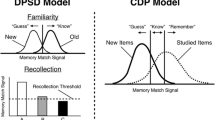Abstract
A major stumbling block in understanding the full significance of embodiment is the reflexive self-conception characterised by free-floating nature. The paper, in the initial sections, looks into the sensory motor approach to phenomenal consciousness and the approach to the study of vision where the world is treated as an external memory. Subsequently, the paper argues that the difficulty in exploring the sensory motor approach to phenomenal consciousness stems from the free-floating self-conception humans is endowed with. The assumption that experiences are internal can make us closed to the role external factors play in constituting experience. Accordingly, a revision in the self-conception carries the possibility of conceptualising experience in a different manner.
Similar content being viewed by others
References
Chalmers D (1996) The conscious mind: in search of a fundamental theory. OUP, Newyork
Clark A, Chalmers D (1998) The extended mind. Analysis 58:10–23
Dennett D (1986) Julian Jaynes’s software archaeology. Can Psychol 27:149–154
Evans JSBT (2010) Thinking twice: two minds in one brain. Oxford University Press, Oxford
Fodor J (1983) The modularity of mind. The MIT Press, Cambridge
Hameroff S, Penrose R (1996) Orchestrated reduction of quantum coherence in brain microtubules: A model for consciousness? In: Hameroff SR, Kaszniak AW, Scott AC (eds) Toward a science of consciousness—the first Tucson discussions and debates. MIT Press, Cambridge, pp 507–540
Haugeland J (1998) “Mind embodied and embedded” in Having thought: essays in metaphysics of mind. Harvard University Press, Cambridge
Hurley S (1998) Consciousness in action. Harvard University Press, Cambridge
Jaynes J (1976) Origin of consciousness in the breakdown of the bicameral mind. Houghton, Mifflin, Boston
Koch C (2012) Confessions of a romantic reductionist. MIT Press, Cambridge
Leary M (2004) The curse of the self. Oxford University Press, Oxford
Maslow A (1964) Religions, values and peak experiences. Wiking, New York
Nagel T (1974) What it is like to be a bat? Philos Rev 83(4):435–450
Narayanan H (2013) Embodied cognition and the Orwell’s problem in cognitive science. Artif Intell Soc. doi:10.1007/s00146-013-0496-5
Noe A (2010) Out of our heads: Why you are not your brain, and other lessons from the biology of consciousness, First edn. Hill and Wang, Newyork
O’Regan J (1992) Kevin solving the real mysteries of visual perception: the world as an outside memory. Can J Psychol 46(3):461–488
O’Regan JK (2011) Why red doesn’t sound like a bell: understanding the feel of consciousness. OUP, New York
Robbins P, Aydede M (2009) A short primer on situated cognition. The Cambridge handbook on situated cognition. Cambridge University Press, Cambridge
Wilson M (2002) Psychon Bull Rev 9(4):625–636
Wilson RA, Clark A (2009) How to situate cognition: letting nature take its course. In: Robbins P, Aydede M (eds) The Cambridge handbook of situated cognition. Cambridge University Press, Cambridge
Wilson AB, Golonka S (2013) Embodied cognition is not what you think it is. Front Psychol. doi:10.3389/fpsyg.2013.00058
Author information
Authors and Affiliations
Corresponding author
Rights and permissions
About this article
Cite this article
Narayanan, V.H. Revisiting the self: a sine qua non for understanding embodiment. AI & Soc 31, 79–84 (2016). https://doi.org/10.1007/s00146-014-0574-3
Received:
Accepted:
Published:
Issue Date:
DOI: https://doi.org/10.1007/s00146-014-0574-3



